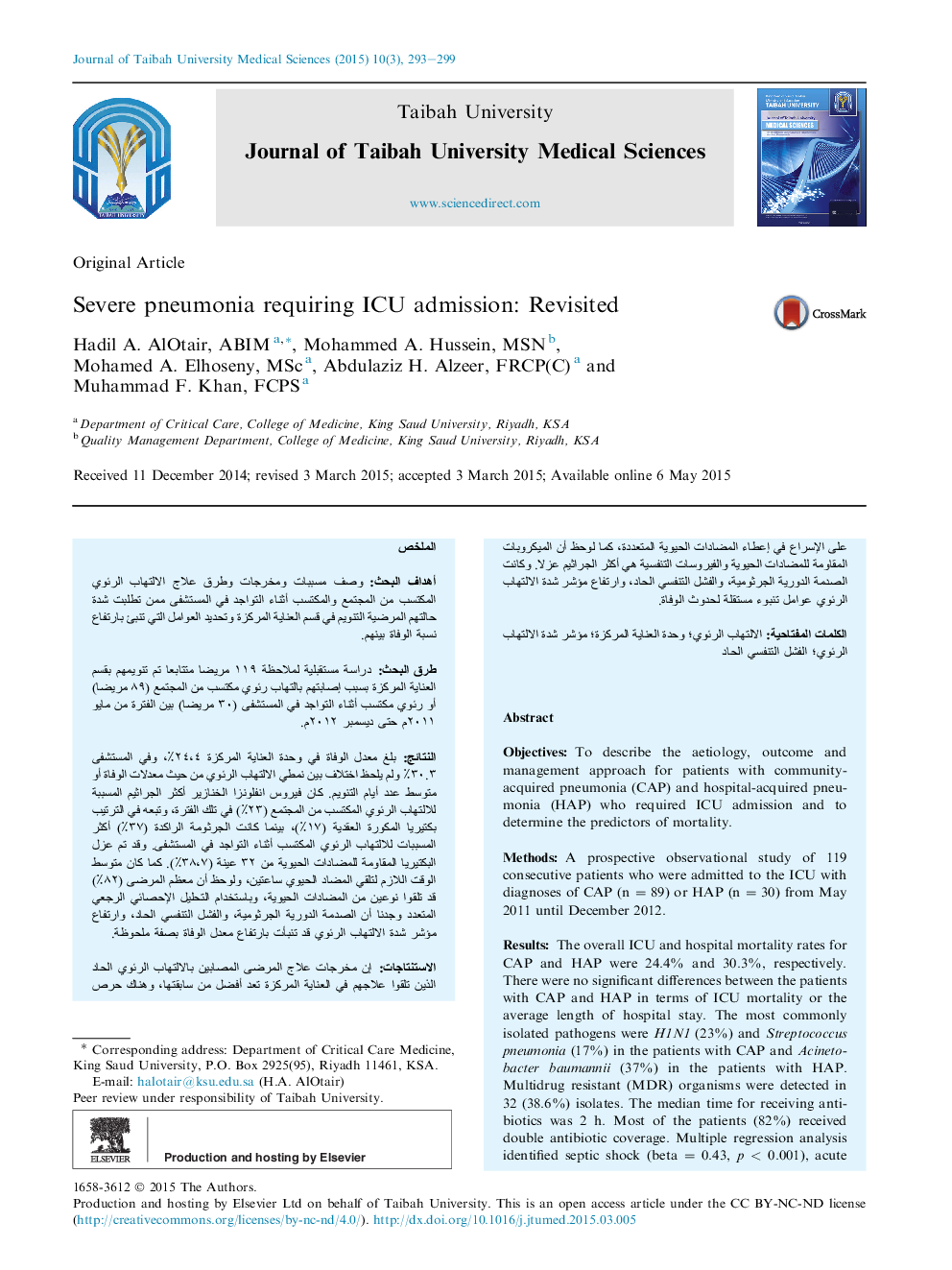| Article ID | Journal | Published Year | Pages | File Type |
|---|---|---|---|---|
| 3484409 | Journal of Taibah University Medical Sciences | 2015 | 7 Pages |
ObjectivesTo describe the aetiology, outcome and management approach for patients with community-acquired pneumonia (CAP) and hospital-acquired pneumonia (HAP) who required ICU admission and to determine the predictors of mortality.MethodsA prospective observational study of 119 consecutive patients who were admitted to the ICU with diagnoses of CAP (n = 89) or HAP (n = 30) from May 2011 until December 2012.ResultsThe overall ICU and hospital mortality rates for CAP and HAP were 24.4% and 30.3%, respectively. There were no significant differences between the patients with CAP and HAP in terms of ICU mortality or the average length of hospital stay. The most commonly isolated pathogens were H1N1 (23%) and Streptococcus pneumonia (17%) in the patients with CAP and Acinetobacter baumannii (37%) in the patients with HAP. Multidrug resistant (MDR) organisms were detected in 32 (38.6%) isolates. The median time for receiving antibiotics was 2 h. Most of the patients (82%) received double antibiotic coverage. Multiple regression analysis identified septic shock (beta = 0.43, p < 0.001), acute respiratory distress syndrome [ARDS] (beta = 0.34, p = 0.003), and the pneumonia severity index [PSI] (beta = −0.36, p < 0.024) as significant predictors of mortality.ConclusionThe outcomes of patients with severe pneumonia who were admitted to the ICU were better than those of previous reports. Early administration of combination antibiotics was practiced with vigilance. MDR organisms and respiratory viruses were the commonly isolated pathogens. The presence of septic shock, ARDS and high PSI were independent predictors of mortality.
